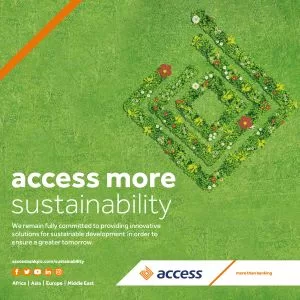Real Estate
Building Smarter: How Location Intelligence is Transforming the Construction Industry

- Location intelligence uses GIS and advanced analytics to serve the enhancement of construction through the optimisation of site selection, resource management, safety, and sustainability.
- Examples from real life, such as drone surveying and rapid site selection during Hurricane Irma, reveal the capability of location intelligence to accurately and efficiently shape construction projects.
Becoming a pivotal technology within a highly dynamic construction domain, wherein relevance and efficiency are directly linked with sustainability, location intelligence has arrived. With the use of GIS and data analytics, location intelligence has transformed the planning, management, and delivery of construction projects. From site selection in terms of optimisation to safety and sustainability, this technology has created a demand among construction professionals who want to build more intelligently and efficiently.
Understanding Location Intelligence
Location intelligence refers to the study of the methods of collecting, analysing, and visualising geospatial data to provide actionable results. It comprises understanding spatial relationships between the elements affecting a construction project, such as sites, manpower, equipment, and infrastructure. This process allows informed decision-making. Location intelligence goes the extra mile by integrating geographic data with project timelines, costs, and environmental situations, thus enabling construction teams to tackle very complicated situations with precision.
As some experts have said, “It’s all about data, what you do with it and what outcomes you can provide that count.” Data-driven outcomes are at the centre of the construction impact of location intelligence.
Technological Advancements Driving Change
Technologies have transformed the capabilities of location intelligence. Some of the tools for spatial data collection, including LiDAR (Light Detection and Ranging) and drone-based surveys, can be used to capture highly precise spatial information. Lidar, for example, can be used for very topographic surveys, as it captures up to a million points per second with an accuracy of ±2mm per 100m and is therefore useful in surveying for planning and monitoring construction projects.
Furthermore, drones equipped with artificial intelligence algorithms process aerial imagery and Lidar data to calculate volumes accurately, eliminating the need for tedious manual surveys. All these technologies are embedded into the BIM systems, which are built around creating a seamless communication flow from planning to construction execution. “BIM exchanges digital data with GIS that allows as-built laser surveys to geolocate assets and furnish details comprehensive of geometrical dimensions, materials, project phasing, cost, and energy consumption.”
Benefits of Location Intelligence for Construction
Location intelligence stands to benefit nearly all aspects of construction, tackling some of the most urgent concerns along its way. The following highlights how it is changing the construction world:
Optimised Site Selection and Planning
Site selection is perhaps the most critical step in a construction project that can help it succeed or not. Colloquially, location analysis serves to map out geographic information in the weighing of critical variables such as soil condition, transport accessibility, local regulations, and market trends. This data-driven rationale gives realistic views on project delivery in terms of feasibility and economics, thereby minimising risk and maximising return.
Resource Management Optimisation
The basis of a successful construction project lies in the effective allocation of resources. Enabling important placements of workers, materials, and equipment, location intelligence, often with the help of AI, directs the proper resources to the right places at the right times. Worker allocation in real-time is optimised considering the skill sets of workers versus timelines and cost of labour, while AI-driven inventory management systems track materials and tools to avert non-utilisation or over-utilisation.
Higher Safety Measures
Safety has been prioritised in construction. Location intelligence helps in maintaining safety by tracking where workers are and verifying if safety protocols are being followed. AI systems harnessing all real-time data from various sensors and cameras are capable of predicting and thus preventing accidents by alerting supervisors to potential hazards before they develop into serious situations.
Sustainability as a Risk Minimiser
Because the built environment accounts for about 40% of annual CO₂ emissions, sustainability has become the focus of increasing interest in construction. Location intelligence supports sustainability by examining building data to minimise waste, maximise energy efficiency, and model environmentally friendly design alternatives. Carbon assessment tools across project life offer green decision support.
In addition, location intelligence aids risk mitigation by automating inspections and ensuring safety standard compliance. By deciphering patterns or problems in the data, it can predict and mitigate such issues proactively, thereby preventing further delays or accidents.
Real Live Case Studies
It is through real-world applications of location intelligence that we see for ourselves its power of transformation. Provided below are two interesting cases in which location intelligence has made an impact in construction and allied scenarios:
Drone-Based Surveying for Precision Planning
Construction companies are now integrating AI-powered drones to perform topographic surveys and volumetric calculations. These drones specifically process aerial imagery and LiDAR data to inform planners with accurate, precise, and detailed site information needed for monitoring the project. The method can both save time and reduce costs when compared to traditional manual surveying, where techniques may be imprecise and labour-intensive.
Examples include companies like Firmatek that have a speciality in drone-based surveying solutions for construction projects. The cloud solutions feature heightened efficiency and extremely detailed site analysis. Providing these tools for construction teams allows much better data-driven decision-making, thus helping construction programmes stay on track and within budget.
Crisis Response During Hurricane Irma
In September 2017, Hurricane Irma caused widespread flooding and vehicle damage across Florida, creating an urgent need for large, paved lots to store thousands of flood-damaged vehicles for insurance processing. Using location intelligence tools like Google Maps and GIS platforms, response teams identified and evaluated multiple suitable sites within days. These sites met key criteria: approximately 10–100 acres, paved surfaces, proximity to major transportation routes, and the ability to be secured.
This case demonstrates the critical role of location intelligence in crisis response, enabling rapid decision-making to support logistics and recovery operations under challenging conditions.
The Broader Impact of Smart Cities: Future Prospects
It is in the context of all its projects that location intelligence will play a major part in the development of smart cities. Cities are now wired up with sensors and mobile devices, creating huge sums of data. Location intelligence therefore acts as “the glue” among these data. Based on this, it will shape decisions about developing infrastructure, resources allocated against it, and how safe it is in the end for monumental projects.
For example, by determining new infrastructure locations based on both foot and vehicle traffic as well as the needs of the people in a particular area, location intelligence can fulfil this purpose that construction is in keeping with urban planning goals. This invention will be necessary for building cities not only resource-efficient or energy-saving but also sustainable and liveable in the future.
In the long term, one should expect location intelligence to grow larger due to digital transformation within the construction industries, which seem to embrace location intelligence increasingly as self-integrating. Through geospatial data, construction professionals can complexly build smarter, safer, and more sustainable buildings, leading to a more innovative future. As one industry leader stated, “The role of location intelligence in the management of these datasets is vital, with it becoming the glue to connect them.”

















































